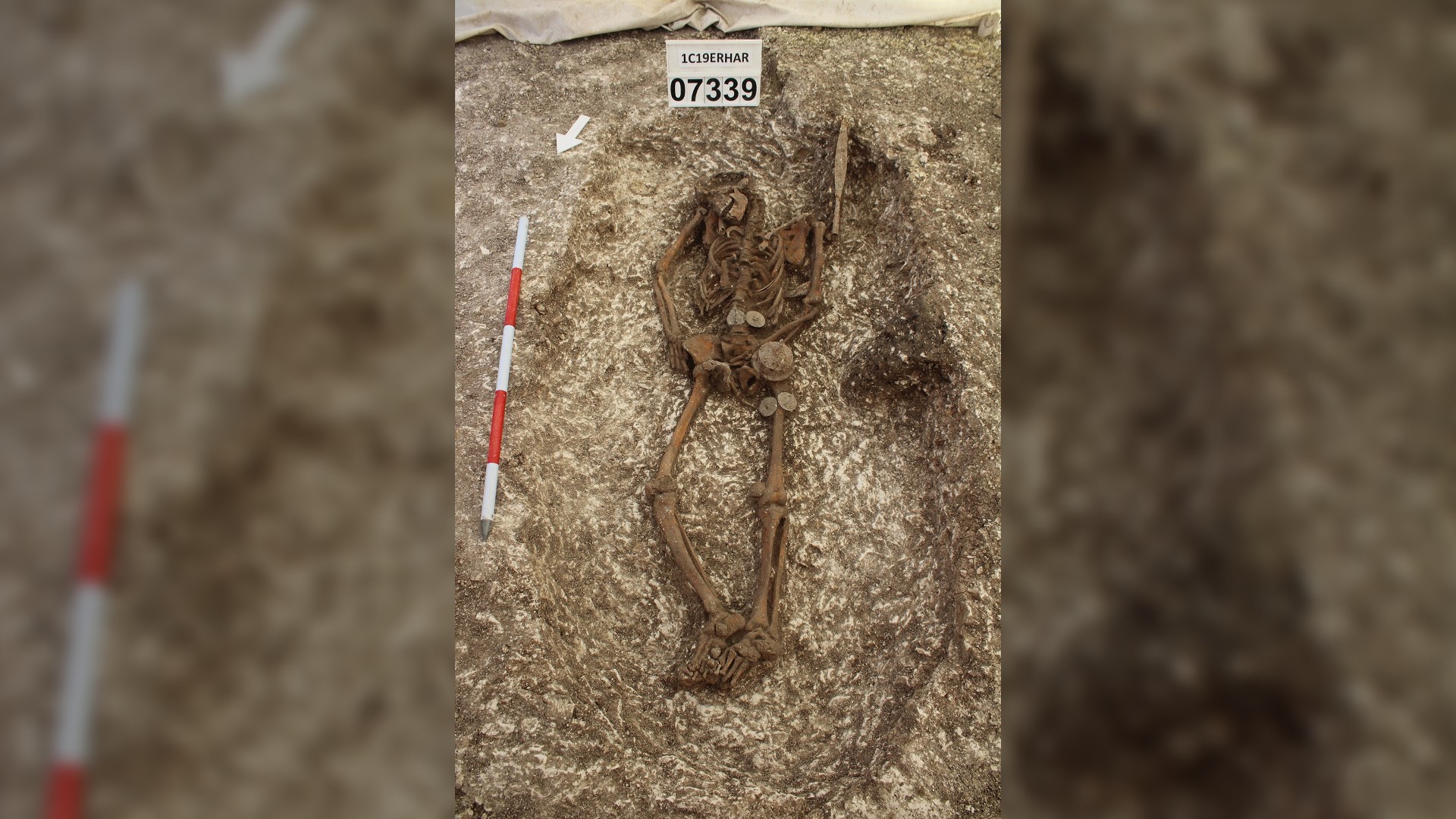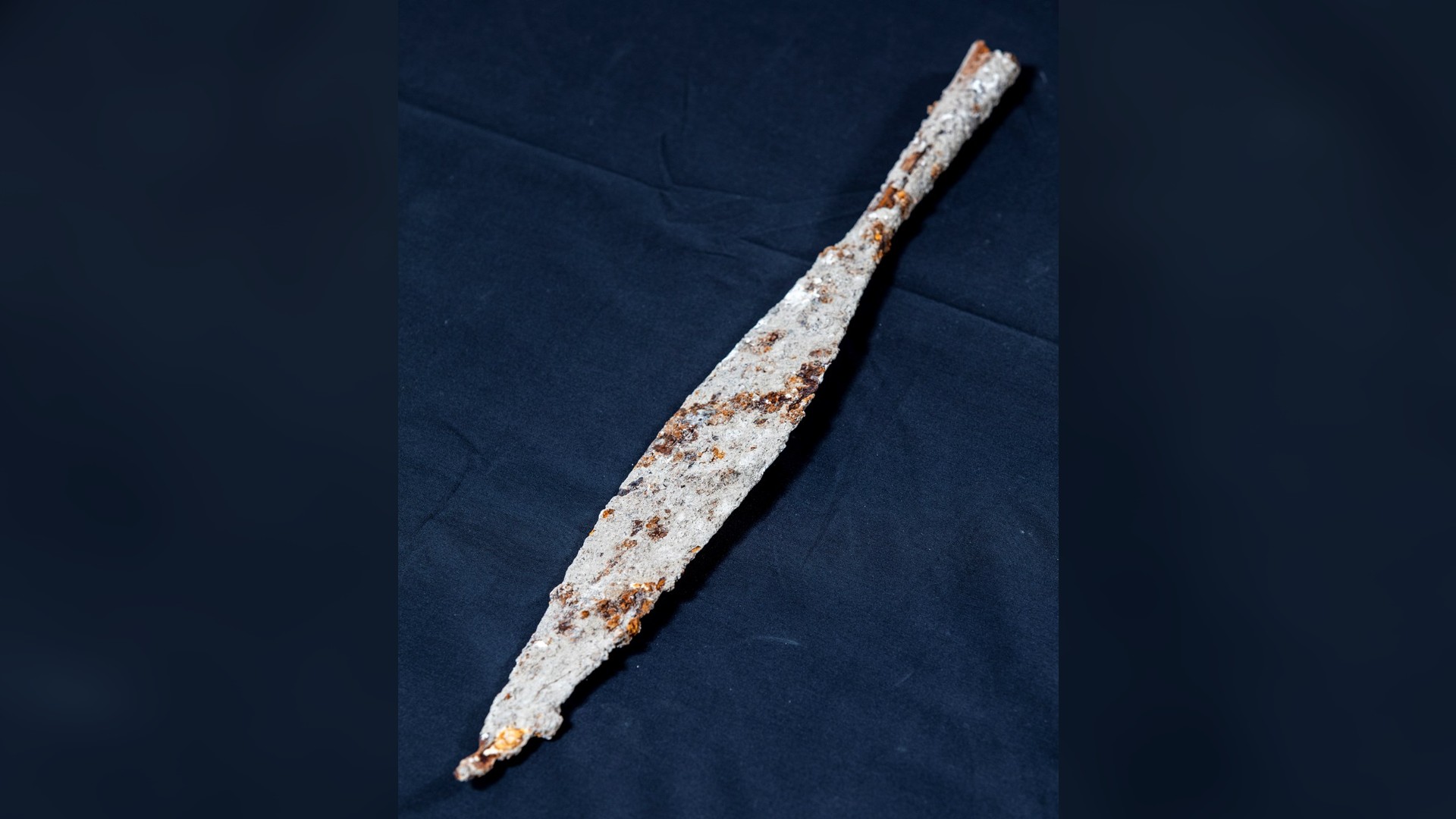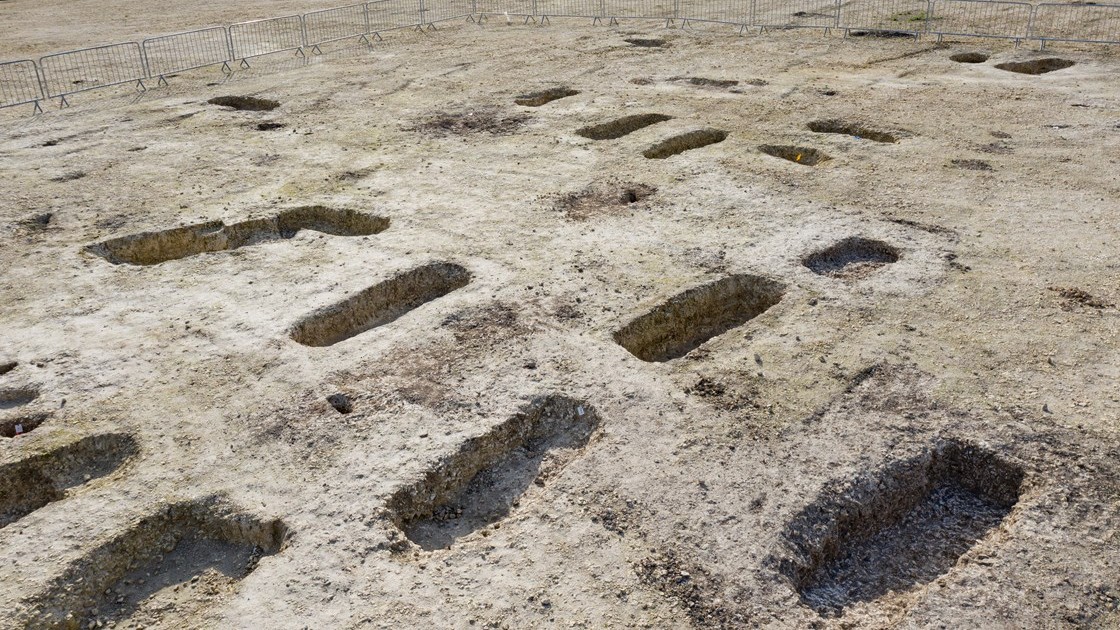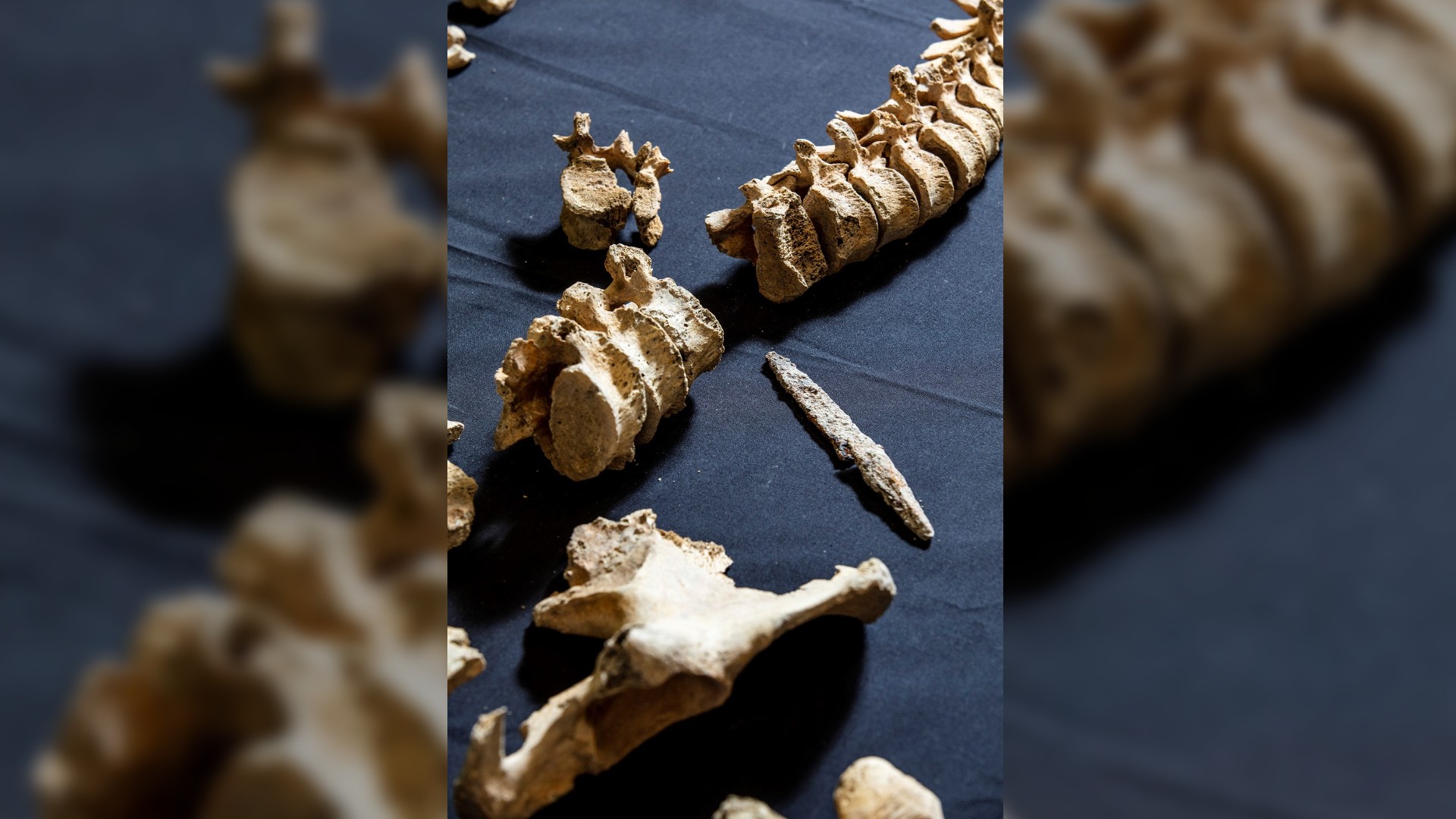1,600-year-old Anglo-Saxon cemetery holds speared man and wealthy woman
The burials included a sword, 15 spearheads and seven shields.

A wealthy pagan burial ground, dating from the first years of the Anglo-Saxon invasion of Britain during the fifth century A.D., has been uncovered near London ahead of a high-speed rail project, known as High Speed 2 (HS2).
The new discoveries, which include more than 100 skeletons, are among the most important archaeological finds made along the HS2 route, which will eventually link the English cities of London, Birmingham and Manchester. Other findings in recent years include a Roman market town; dozens of decapitated skeletons and a 2,000-year-old wooden pagan idol, Live Science previously reported.
"When we find Anglo-Saxon cemeteries, they're likely to be a few individuals, or sometimes 20 or 30," Rachel Wood, the lead archaeologist for HS2 contractor Fusion JV, told Live Science. "But here we've got 141. It's not the biggest ever, but it's certainly up there."
As well as the human remains, which include a young man who appears to have been killed by a spear, the archaeologists have unearthed the rich grave goods interred with them, such as brooches and rings of silver and other metals decorated with gold.
Related: Skull reveals Anglo-Saxon teen's nose and lips were cut off 1,100 years ago
Personal grooming kits with tweezers and spoons for removing ear-wax were also found in many of the graves; and some of the objects, such as amber beads and glass drinking vessels, were probably brought to Britain from continental Europe. The high-status and expensive grave goods suggest that whoever was buried at the site, which looks out over the vast and flat lands of Aylesbury Vale to the north, belonged to a wealthy Anglo-Saxon community, Wood said.
It may even have been the final resting place of a single affluent landowning family over several generations. "It's likely that everybody else in their community was buried somewhere else," and not at this newfound burial ground, she said. "They clearly seem to have chosen a spot to bury the wealthy."
Get the world’s most fascinating discoveries delivered straight to your inbox.
Anglo-Saxon lands
The burial ground near the town of Wendover is one of the earliest traces of Anglo-Saxon habitation anywhere in Britain. The later graves date from the sixth century, but the earliest date from the fifth century — maybe only a few generations after the end of direct Roman rule in about A.D. 410.
By that time, several armies garrisoning the Roman province of Britannia, in the regions that are now England and Wales, had been withdrawn to fortify Gaul against rebellions and invasions by the barbarian Germans. After that, much of the region reverted to indigenous Christian "Romano-British" rule, but it came under attack after about A.D. 440 as the pagan Anglo-Saxons from northern Europe started to settle there.






The Anglo-Saxons buried at Wendover were definitely armed — the grave goods included an iron sword, 15 spearheads and the remains of seven shields, Wood said. A metal point, probably the tip of a spear, was found in the spinal bones of one man and seems to have killed him; reconstructions suggest it came from a blow to the front.
But there was no other evidence that the people buried there had lived a violent life of frequent fighting with the Romano-British, Wood said.
The excavations at the burial ground have also turned up 51 knives, which might be interpreted today as weapons, but at that time were commonplace. "You'd look at that today and think if a person has been buried with a knife, then that must be a weapon," she said. "But it's how they ate — forks were not a thing, and they all had small eating knives."
Wealthy burials
One of the Anglo-Saxon graves at Wendover stands out as particularly rich. The individual in the grave, a woman, was buried with a vast array of grave goods that suggest she was of high status, Wood said.
They included an ornate bowl made of pale green glass that was possibly created at the turn of the fifth century and may have been an heirloom from the Roman period. The woman was also buried with several rings, including one of silver; brooches; iron belt fittings; and ornaments of ivory.
Related: Why did Rome fall?
The objects in the graves and the condition of the skeletons suggest the early Anglo-Saxon community near Wendover was less warlike than might have been expected for the time, Woods said."If it was a group of people who have been killed in battle, we would have seen a lot of broken bones, holes in skulls, things like that," she said. "But it's much more of a peaceful picture of a very well-cultured community."
The period between Roman rule and the established Anglo-Saxon kingdoms used to be called the "Dark Ages" in Britain, possibly because so little was written down at that time; and it's been portrayed as time of near-constant warfare between the Romano-British and the Anglo-Saxons. For example, the legends of King Arthur — a post-Roman Christian king fighting the invaders — are set in this time.
But Wood said the reality may have been less savage. "These are highly-cultured groups of people — they are only perceived as uncultured because they didn't write anything down," she said.
It's even possible that the people buried in the Anglo-Saxon graves at Wendover may have had some British ancestry, but that they'd adapted to the prevailing Anglo-Saxon style.
"They are certainly the first generations who were living after the end of the Roman administration," she said. "But whether or not they are the first generations who came over from the continent, we won't know until we do things like the isotope analysis" — a technique based on variations of chemical elements in bones that can reveal the geochemistry of the environment at the time that the people were living, and possibly their geographic origin.
Originally published on Live Science.
Tom Metcalfe is a freelance journalist and regular Live Science contributor who is based in London in the United Kingdom. Tom writes mainly about science, space, archaeology, the Earth and the oceans. He has also written for the BBC, NBC News, National Geographic, Scientific American, Air & Space, and many others.



